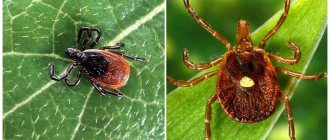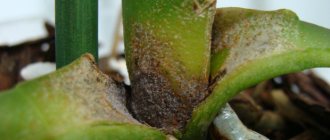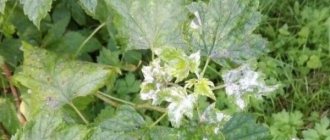Spider mites parasitize ficus quite often. Often these insects are brought into an apartment by accident, for example, through an open window or with diseased plants. If the house is humid and warm, then the conditions are quite favorable for the rapid proliferation of parasites. The spider mite is an extremely tenacious creature, and it even multiplies with temperature changes . Many varieties of indoor plants can harbor these insects, but ficus plants usually show the most severe signs of leaf damage.
The sooner the characteristic symptoms of a parasitic infestation were noticed and the necessary treatment began, the higher the chances of getting rid of the scourge. There are many ways to eliminate it. In case of severe infestation, special chemical insecticides should be used. If the number of leaves affected by insects is large, it is quite possible to cope with parasites using some proven folk remedies. If at least one case of ficus infection with mites is detected and they are effectively eliminated, it is necessary to take certain preventive measures.
What does a spider mite look like?
Many people find it difficult to believe that the wilting of their favorite ficus is directly related to parasite damage. Spider mites are small in size, their body length does not exceed 0.3-0.6 mm. The shape of insects is usually oblong-oval. Their entire body is covered with small, but quite noticeable hairs, which help them cling to the plant whose juices they feed on. It is impossible to see these insects with the naked eye. You should use a regular magnifying glass, through which you can clearly see them.
Female spider mites are slightly larger than males. All adult ticks have 4 pairs of prehensile legs. Adults lay eggs in large numbers. Given favorable conditions, they ripen in just 3 days. In unfavorable conditions, eggs can survive in the soil for about 5 years. It is precisely because of their survivability that the fight against spider mites is quite protracted. Typically, larvae and adults respond well to the effects of both chemical insecticides and folk remedies. Ticks lay eggs in the soil, on pots and tree stems, as well as other elements.
Parasite eggs can persist for a long time, waiting for favorable conditions for the larvae to emerge. Ticks usually live in colonies, which greatly aggravates the situation, since the young live with their parents and begin to harm the ficus even more.
These insects are brownish or green in color. They move slowly, so it is almost impossible to notice them. Both adults and larvae have a special proboscis, which they use to pierce the leaves and drink the juices of the plant. It is important to know the main symptoms of plant damage by these parasites.
Tropical and cactus scale insects
The tropical scale insect (Abgrallaspis cyanophylh) has been recorded on many greenhouse plants; Of the cacti, it affects cereus, prickly pear, mamillaria, etc. The scutellum of the female is oval and yellow.
The cactus scale insect (Diaspis echinocacti) settles on cacti in entire colonies. Prefers prickly pears, echinocacti, cereus, and mamillaria. It sucks out juices, which leads to drying out of individual parts, and sometimes entire specimens. Whitish-yellow spots appear on the stems, which often merge. The female of this insect is covered with a round white shield 4 mm long. Two generations develop in a greenhouse; mass reproduction of the pest is noted in spring and autumn.
Watch the video “Fighting scale insects” to better understand how to get rid of these pests:
Signs of ficus damage by spider mites
Typically, colonies of parasites remain on the back side of leaves, so it is quite difficult to see the first signs of plant damage. Ficus plants are distinguished by fleshy leaves and thick stems, which provide all parts of the plant with the necessary amount of water. Throughout the year they delight the eye with bright greenery. However, the picture changes completely if the ficus is infected with spider mites. Usually, insects first settle on the trunk. Thin skin is not an obstacle for them. The main sign of damage to this part of the plant by insects is a barely noticeable web that envelops the plant. It allows the existing colony to move efficiently, getting to feeding areas, and serves as protection from possible predators.
Next you should pay attention to the leaves of the ficus. The appearance of a marble pattern indicates the spread of the tick and an increase in its population. A small cobweb enveloping the leaves at the back is a fairly indicative sign of a problem. When a plant is severely damaged by spider mites, the leaves along the edges begin to gradually die. This is due to the fact that damaged vessels through which water moves do not transfer it to the cells. Parasites draw juices from the leaves, so they quickly curl and die. Spider mites cause depletion of the plant, the growth of which slows down significantly. Young leaves may die due to lack of nutrition, and the buds may dry out. The ficus sheds mite-damaged shoots, becoming “naked.” In most cases, if no targeted action is taken, the plant dies.
Chemical insecticides in the fight against spider mites
When deciding which means to use to eliminate parasites that destroy indoor plants, you should first soberly assess the extent of the existing damage. If almost all the leaves on the reverse side show signs of mite damage, there is no growth of new shoots, and the ficus looks unhealthy, you should not even try to solve the problem with gentle folk remedies. In the presence of a huge population of ticks, only chemical and biological preparations can cope with them, which will destroy not only adults and larvae, but also eggs. The most effective spider mite remedies that can be used to treat ficus include:
- Fitoverm;
- Alatar;
- Intavir;
- Karbofos;
- Aktellik;
- Neoron;
- Actofit Fufanon;
- Apollo;
- Vermitek.
Each of these chemicals must be used only if the requirements in the instructions can be met. For example, poisoning spider mites with Actellik is only permissible in a well-ventilated area in order to avoid poisoning the people and pets in it. Plants can be treated with this preparation only in the summer, by taking the pot to the balcony or outside. Chemicals such as Neoron and Fitoverm can also be used indoors, but after treatment it should be well ventilated. Thus, in order to avoid unpleasant consequences, you should follow all the recommendations for use that come with such products.
The only alternative to insecticides against spider mites are biological preparations. Such substances include Amblyseius and Phytoseiulus. These drugs are a new method of combating parasites. The products contain another type of mite that leads a predatory life. They eat not only adults and larvae, but also their eggs. This allows you to achieve a fairly quick positive result. After all the spider mites are removed, the effect of the drug will end. Predatory ticks, deprived of food, will simply die.
Useful video
This video explains how to deal with spider mites and other pests of Ficus Benjamin:
Spider mites on ficus are a problem that any gardener may encounter. Often the fight against this pest is not easy, and it does not disappear after the first treatment with one or another substance. If cobwebs appear on a plant, what to do - take action immediately and prepare for a long treatment process.
In order for it to be as short as possible, you should know what the signs of damage to a home tree are and how to deal with them. At the first alarming symptoms, measures should be taken immediately, since constant parasitism of the mite on the plant will inevitably lead to its rapid death.
Folk remedies against spider mites
If the damage to plants is small, it is quite possible to do without the use of chemicals. The first aid in the fight against spider mites is usually laundry soap. First you should grate it on a fine grater. This will make it easier to make the mixture. With a thick soap solution, carefully treat all the huge leaves of the ficus and its stem with a soft sponge. In addition, a little foam should be applied to the top layer of soil in the pot. Leave the ficus in this position for at least 2 hours. Thoroughly wash the area where the plant usually stands with soap. After the specified time, thoroughly rinse the solution from the ficus leaves. The procedure should be repeated at least 5-8 times with an interval of 2-3 days.
Another good folk remedy for fighting spider mites is rubbing alcohol. They should thoroughly wipe the leaves and trunk of the plant. Rubbing alcohol cannot harm the plant, but it will quickly destroy both adult spider mites and their larvae. However, this remedy does not work on eggs. In order to eliminate spider mites completely, you need to carry out the procedure of treating the leaves and stem of the ficus with an interval of 2 days. Next, you should take a break of at least 3 weeks and, if necessary, repeat the course of treatment.
You can also get rid of spider mites using regular onion peels. To prepare the product you will need approximately 100 g of this component and 5 liters of boiling water. The finished mixture should be placed in a warm, dark place for 4-5 days. Next, the leaves and stem of the ficus should be immersed in the resulting infusion every day. When processing the plant, special attention should be paid to the back side of the leaves. The pot and soil also need to be sprayed.
Garlic is an effective way to combat spider mites. To prepare the infusion you will need 2 heads of garlic per 1 liter of boiling water. The thoroughly crushed plant component should be filled with water and set aside in a dark place for about 5 days. Before spraying, the resulting solution should be diluted with water in a 1:1 ratio. Treatment should be carried out using a spray bottle.
Another excellent way to combat spider mites is chamomile alcohol tincture. This product can be purchased ready-made at the pharmacy. It is used to spray the plant from a spray bottle. To kill spider mites, you can use chamomile decoction. To prepare the product, you need to take approximately 5 liters of crushed herbal ingredients and 1 liter of boiling water. The mixture should be boiled for at least 5 minutes. After this, it can be used to spray the ficus and water it.
Methods for preventing ficus damage from spider mites
Various pests can cause significant damage to potted plants on windowsills. Few people want to see the death of their favorite ficus as a result of spider mite infestation. There are no preventive measures that could 100% prevent damage to this plant. But not everything is as sad as it might seem at first glance.
To reduce the risk of parasite infection, you need to strictly control watering. Constantly moist soil in a ficus pot, combined with warm, humid indoor air, means that insects can quickly multiply in an environment favorable to them. To prevent ficus plants from becoming infected with spider mites, you should periodically clean their leaves with a mild soap solution. This will not harm the plant, but will destroy individual mites that accidentally fell on it.
It is advisable to treat the plant with insecticidal or folk remedies at least once a month. You should wash the area where the ficus pot is located from time to time. In order to destroy possible ticks and their eggs, all surfaces should be treated with an aqueous solution of any cleaning agent.
For preventive purposes, it is necessary to periodically inspect the plants, paying special attention to the places on the stem where the branches extend and the back side of the leaves. A thorough examination of the ficus allows you to detect spider mite infestation at an early stage and promptly begin treatment of the plant.
Reasons for the appearance of scale insects
Ficus benjamina is considered one of the most popular indoor plants because it does not require special care and becomes a beautiful miniature tree in a few years. But if you do not adhere to basic rules for its maintenance, the plant grows weak, and this is the main reason for infection with scale insects.
The following factors will be favorable for the rapid proliferation of the pest:
- proper watering is not observed;
- insufficient amount of light;
- the air in the room is too cold or hot;
- excess nitrogen content in the soil;
- diseases of other indoor plants.
The most dangerous period for ficus infection with scale insects is winter. The air is dry due to heating, daylight hours are too short. All this affects the fact that the plant sap undergoes changes in its structure, which attracts insects.











